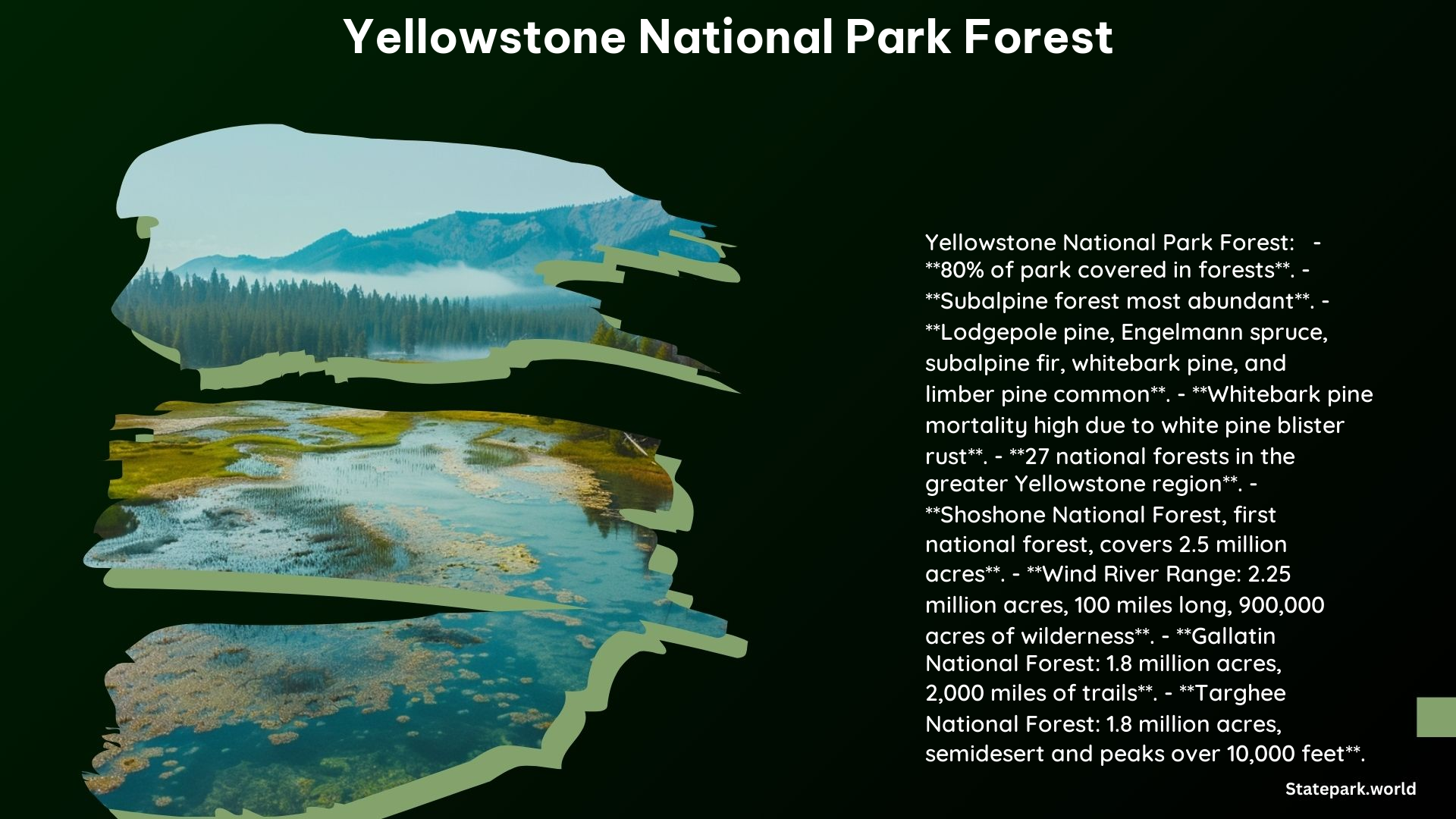Yellowstone National Park is a vast and diverse wilderness, home to an array of natural wonders, including its extensive and varied forests. These forests cover approximately 80% of the park’s area and are characterized by a range of tree species, each with its unique adaptations and roles within the ecosystem.
Types of Forests in Yellowstone National Park
Yellowstone National Park is home to several distinct forest types, each with its own unique characteristics and ecological significance.
Subalpine Forest
The most abundant biome in the park, the subalpine forest is part of the South Central Rockies forests ecoregion. These forests are typically found at higher elevations and are dominated by a mix of tree species, including Engelmann spruce, subalpine fir, and whitebark pine.
Lodgepole Pine Forest
Lodgepole pine is the dominant tree species in many of Yellowstone’s forests. These trees are shade-intolerant and have thin bark, making them particularly susceptible to mortality from ground fires.
Engelmann Spruce and Subalpine Fir Forest
At even higher elevations, where andesite (a type of volcanic rock) is prevalent, the forests are often dominated by Engelmann spruce and subalpine fir. These species are well-adapted to the harsh, high-altitude conditions.
Whitebark Pine Forest
Significant in the upper subalpine zone, whitebark pine trees are often found in isolated stands of timber, separated by subalpine meadows. This species plays a crucial role in the ecosystem, providing food and shelter for various wildlife species.
Impact of Fires on Yellowstone National Park Forests

Fire has long been a natural and integral part of the Yellowstone ecosystem, shaping the composition and structure of the park’s forests.
Historical Role of Fires
Low-intensity ground fires have been a natural occurrence in Yellowstone for centuries, with many trees in the park displaying fire scars from past events.
Susceptibility of Tree Species
The varying susceptibility of different tree species to fire has a significant impact on the forest composition. Lodgepole pine, with its thin bark, is more vulnerable to mortality from ground fires, while Douglas-fir trees, with their thicker bark, are better able to tolerate low-intensity fires.
Changes in Forest Composition
The absence of fires in some areas has led to a shift in forest composition, with Engelmann spruce and subalpine fir becoming more dominant in place of the once-dominant lodgepole pine.
Additional Information
Forest Area
Yellowstone National Park covers an impressive area of 3,468.4 square miles (8,983 square kilometers), with forests making up a significant portion of this landscape.
Wildlife and Ecosystem
Yellowstone National Park is part of the Greater Yellowstone Ecosystem, the largest remaining nearly intact ecosystem in the Earth’s northern temperate zone. This ecosystem provides a vital habitat for a diverse array of wildlife species.
References
- https://www.yellowstonepark.com/road-trips/road-trip-stops/visit-wyoming/explore-a-national-forest/
- https://en.wikipedia.org/wiki/Yellowstone_National_Forest
- https://www.nps.gov/yell/learn/nature/forests.htm
- https://en.wikipedia.org/wiki/Yellowstone_National_Park
- https://www.nps.gov/yell/index.htm
